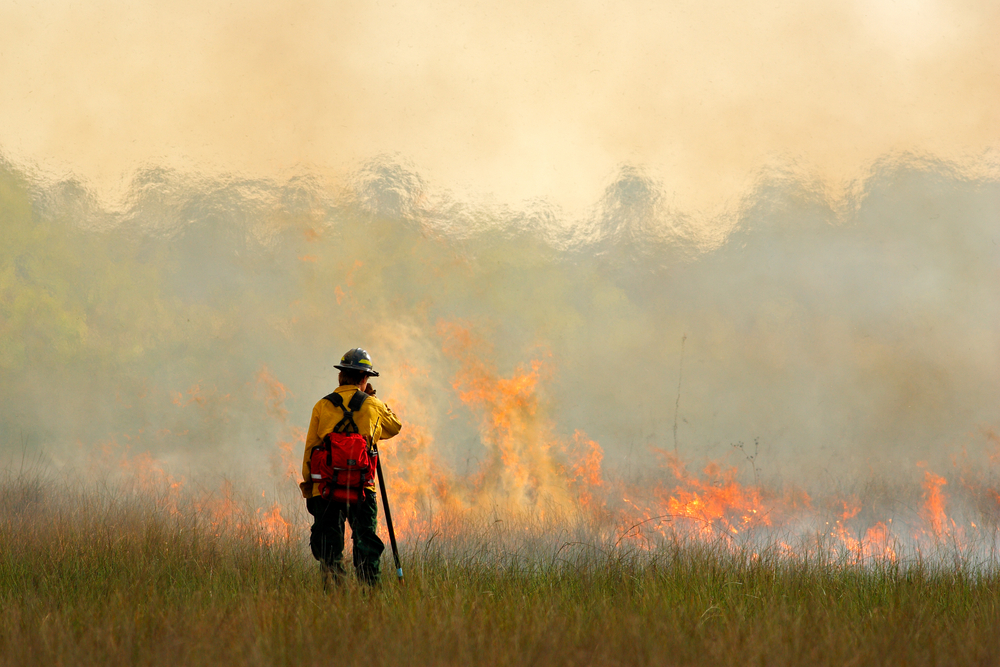This Wildfire Season, Prep Your Property for Prevention
According to data from the U.S. National Park Service, nearly 9 out of 10 wildfires are caused by humans1. The National Oceanic and Atmospheric Association reports that wildfires caused an estimated $98.9 billion in damage from 2017-2023, which is over 8 times more than the $12 billion in damages from 2010-20162. Those statistics are chilling. There are various reasons for the significant increase in wildfire activity since 2017, often cited as increased drought and soaring temperatures combined with high winds. There is a silver lining. Since most wildfires are the result of human behavior, we are better poised to make a positive difference, no matter the weather! This wildfire season, we have collected some simple wildfire prevention tips you can implement today to help prevent these devastating events.
Last month, we interviewed Tyler Zuniga, a Safety and Training Specialist with North American Training Solutions (NATS). Tyler has years of experience in wildfire mitigation techniques. "Fuel reduction and proper debris management around houses and neighborhoods are one step homeowners can take" Tyler explained. "Planting native drought-resilient vegetation is another possible strategy." Let’s break that down.
Fuel Reduction
What are wildfire fuels? Any plant material can be considered fuel for a fire. This includes grasses, shrubs, trees, fallen leaves, pine needles and fallen tree limbs. The more fuel that is available, the hotter, faster and more difficult the fire will be to manage. Many state and federal agencies have scientific methods for reducing wildfire fuels on a large scale. This could include prescribed fires and considerate removal of overgrown vegetation.
How can you create a "defensible area" around your home in wildfire-prone areas? Oregon State created a thorough resource on this topic, and if you live in a high-risk area for wildfires, it’s virtually a must-read.
For fuel reduction on private, residential property, they recommend keeping things "lean, clean and green".3
- Lean means highly-flammable vegetation is discouraged within 30 feet of a dwelling, and all vegetation should be maintained. Mature trees should be trimmed to 10 feet from the ground and 10 feet away from your roof.
- Clean refers to the removal of accumulated dead vegetation and/or flammable debris.
- Green means any plants near the home are kept green and healthy, with regular watering particularly during fire season.
Proper Debris Management
The US Department of the Interior have assembled a wonderful list of wildfire prevention strategies4. Their list includes things to consider when you want to burn debris. They suggest you never burn debris when it is restricted (due to drought conditions for example) and you should always check the weather to ensure conditions are not excessively dry or windy.
If conditions are right and you plan to burn debris on private property, you should always:
- Have a water source, such as a garden hose, nearby
- Refrain from burning near other flammables, such as downed logs or tall brush
- Stay with your fire
- Completely extinguish your burn when finished by "mopping" the ash by adding water and stirring multiple times until cold.
Debris piles not properly extinguished can start fires even days or weeks after the initial burn. Just because it doesn’t appear to be smoldering, doesn’t mean it can’t kick back up down the road.
Go Native
Native plants are not only attractive and easier to maintain in landscaping, they also help prevent wildfires! According to the U.S. Forest Service5, native plants are advantageous because they:
- Are unlikely to be invasive or overly competitive with other native plants
- Return to or maintain more normal fire intervals and fuel loadings (e.g. the amount of combustible materials in a given space)
- Provide food sources (nectar, pollen, seeds, leaves, and stems) for native butterflies, insects, birds, and other animals
- Reduce energy consumption and pollution (limited need for mowing)
- Reduce the need for pesticides
- Enhance aesthetics and visual quality
- Protect at-risk species
- Protect biodiversity and stewardship of our natural heritage
Choosing diverse, native plants helps them adapt to climate changes, reduces susceptibility to pathogens, and creates less competition for invasive species. When plants die, they become even stronger fuel for fires. Keeping plant-life healthy and happy helps!
If you aren’t sure where to begin in choosing healthy, native vegetation, we recommend visiting your local arboretum or botanical garden. You can even visit a local nursery and talk with a qualified professional, or just browse around! A final resource we found was a native plant finder tool, built by the research of Dr. Doug Tallamy in collaboration with the National Wildlife Federation.
Always exercise extreme caution in dry and windy conditions, be aware of flammable debris in the area of burn piles or campfires and properly extinguish any flame using the "mopping up" method. Together, we can do our part to help manage destructive and deadly wildfires!
- Source: 2000-2020 data based on Wildland Fire Management Information (WFMI) and U.S. Forest Service Research Data Archive
- Source: NOAA National Centers for Environmental Information (NCEI) U.S. Billion-Dollar Weather and Climate Disasters (2024). https://www.ncei.noaa.gov/access/billions/, DOI: 10.25921/stkw-7w73
- Source: https://extension.oregonstate.edu/catalog/pub/em-9184-keeping-your-home-property-safe-wildfire#fuels-reduction-zones
- Source: https://www.doi.gov/blog/10-tips-prevent-wildfires
- Source: US Forest Service, https://www.fs.usda.gov/wildflowers/Native_Plant_Materials/whyuse.shtml#:~:text=Advantages%20of%20Using%20Native%20Plant,fire%20intervals%20and%20fuel%20loadings








